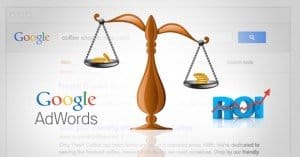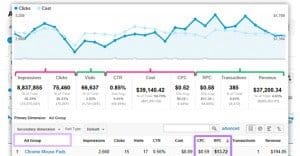Which Is Better: CPC Ads or CPM Ads?

CPM and CPC are two sides of the same general advertising coin. They’re both payment schemes relating to how you spend your money and what you get out of it. CPC is cost per click. You pay for clicks; ads shown to people who don’t click are free. CPM is cost per mille, per thousand. The thousands refers to impressions. Showing your ad to someone costs you money, regardless of whether or not they click.
So which method is better? Just based on that description, it sounds like CPC is the clear winner. A click is much more valuable than an impression, after all. That’s just based on mechanics, however. You also have to factor in costs and goals.
Costs of Business
The primary difference between CPC and CPM, once you’ve gotten past the mechanics, is the costs. Impressions, because they are far less valuable to a business, cost far less to bring in. You might buy an ad at $1 CPC, or one dollar per click. On the other hand, you might buy an ad for $15 CPM, fifteen dollars for a full thousand impressions.
At this rate, all you need is 15 clicks out of 1,000 impressions in order to equal the effectiveness of the CPC ad. If 1.5% of the people who see your ad click it, your ad is equally as expensive and equally as effective as a CPC ad. On the other hand, if your click-through rate is higher – 3%, for example – your CPM ad becomes much more effective. Calculated out, you would be paying 50 cents per click, as compared to the $1 CPC of the other type of ad.
Think about it in terms of an overall budget, for a moment. Say you have $5,000 to spend on your ads. You can spend that $5,000 on CPC at $1 per click, which brings in exactly 5,000 clicks.
On the other hand, dedicating $5,000 to a CPM model at $15 per thousand will ensure that your ad is shown to 333,333 people. That’s a hell of a lot of people, and if you have a reasonable click-through rate, your ad will pull in way more than 5,000 clicks.
On the other hand, if your ad is poorly done, you might have a meager .5 CTR, and after your $5,000 budget, only end up with a 1,600 clicks.
The Trials of CPM
CPM ads, therefore, are much more fickle. When you’re paying for CPC, what you’re paying for is a guarantee of a certain number of clicks. If your ad performs well, or your ad performs poorly, it doesn’t matter; the end result is your bank account is $5,000 lighter and your site has 5,000 more clicks. Facebook, Google, or any other platform, runs the ad as long as it takes to get the right number of clicks.
With CPM, you have to care much more about the quality of your ad. A very good ad can bring in way more clicks compared to an equal budget CPC run. A very bad ad is literally throwing your money away for no returns. Heck, you could burn $5,000 dollar bills and the publicity stunt of doing so would attract more traffic. Your ad quality matters, which is why some platforms like Google had associated quality scores.
Facebook, additionally, has thrown a wrench into the works with what they call OCPM, or optimized cost per thousand. They use what they know of your business and the people using the site, leveraging that knowledge to try to display your CPM ad to people most likely to click. In a sense, opting for OCPM over CPM is a boost to your CTR, with an identical ad.
Making the Choice
So which is better; CPC or CPM? Really, it entirely depends on your ads and what follows afterwards. If your sales funnel is especially effective, but your ad isn’t very good, CPC is definitely the way to go. The guaranteed clicks puts people into your funnel, and the funnel does a great job of converting those people to customers, so you make a lot of profit.
On the other hand, if your ad is very good but your sales funnel isn’t quite as effective, you end up with a situation where CPM is better. CPM funnels as many clicks as possible into your funnel, and your funnel converts people at whatever rate it works. You need as many opportunities as possible, so you have as many chances to convert as possible.
Optimizing Ads
If you’re in a situation where your ad needs to be better, it’s time to start split-testing ad groups. There are a lot of ways you can optimize your ads, depending on the platform you’re using. Split testing is a way of running two identical ads at the same time, changing one variable to see which version of the ad works best. Once you determine a winner, you can run a new variation to test another variable, and repeat the process over and over until you have the best possible ad.
What can you test?
- Change up the copy on your ad. Any text involved, even if that text is part of an image, can be changed.
- Any images involved. You won’t always be running image ads, but if you are, the image is an important part.
- Position. Ads on the sidebar, ads in the footer, ads in the banner slot, ads in the text; different ads have different properties, all of which you can test.
You can also optimize your sales funnel.
- Are you trying to sell in one visit or nurture leads for the long term?
- You can optimize your landing page in numerous ways.
- You can even change up the URL that displays when users click your ads.
- Optimize your sales messages, if you’re using long-term tactics like an email list.
- Optimize deals and offers that might entice more immediate buyers.
 ContentPowered.com
ContentPowered.com





Good explanation. It sounds like CPC is a bit more straightforward. If Google Adwords prefers CPC, then that’s what makes most sense to me.
Hi Peter, yes, I prefer CPC as well =] every traffic supplier / ad network is different, though.